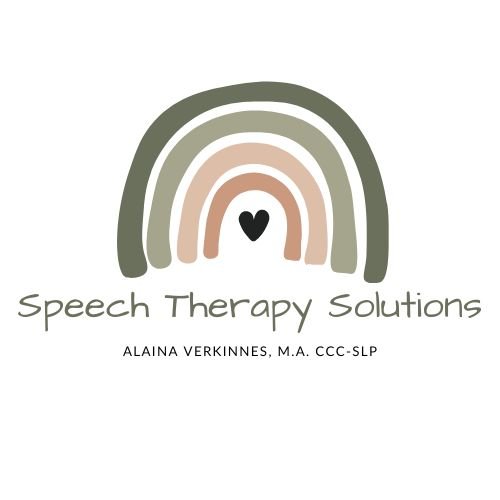School vs Outpatient Speech Services
My child is on an IEP/IFSP OR didn’t qualify for services in school. What is different about outpatient speech therapy?
There are a few differences between the services provided at school and at home. But let’s start with some of the similarities.
The SLP: Most of the time, an SLP has the same qualifications when it comes to providing services in the school setting and in an outpatient setting. All Speech-Language Pathologists have a national certification through ASHA. A school SLP is licensed through Minnesota Department of Education with a Tier 4 teaching license. A medical SLP is licensed through the Minnesota Department of Health. Some SLP’s have both state licenses.
Evaluations are completed using assessments, formal/informal observations, caregiver/client interviews, etc.
Deficits impacting communication are addressed using evidence based practices
Speech-Language Pathologists can collaborate with your child’s other clinicians/teachers
You're a part of your child’s plan. Parents are meant to be involved in creating and monitoring of IEP/IFSP’s/Plan of Care. You sign off on these documents and agree to your child’s specific plan.
If your child is on an IEP or IFSP, you may be asking “Does my child need outpatient speech, too?” I have been asked this question by parents often, so here are some differences …
If your child is on an IFSP, you are working with a birth-3 teacher and the focus of services are geared toward parent-training. You have an expert come out and help you create more opportunities for your child to talk, engage, and interact in his/her natural environment. Outpatient services are a direct service to your child. Parents are still included on the child’s plan and progress. A lot of times parents are present during sessions.
Location:
Outpatient: Services happen in a clinic or in the child’s home/daycare. Treatment is 1:1 and often mimics a child’s natural play environment with focus on functioning in his/her home, community, or other environments.
School: Services happen in the school environment, often with peers, with focus on functioning and participating in school.
Eligibility:
Outpatient: Follow a medical model. Any concerns about a child’s communication development that impacts their life. Evaluations indicate a disorder or delay, meaning performance is below what is typical for their age. Insurance companies can cover services based on a doctor’s prescription for services after communication disorders are diagnosed. There are times where children do not qualify for speech at school, but would in an outpatient setting. There is also the option to pay out of pocket for services.
School: Follow an educational model. Concerns about communication that impact their ability to access their education or participate in school. Goals are targeted through an Individual Education Plan (IEP), that an educational team agrees on. Evaluations indicate a disorder or delay that is below what is expected for their age. The Individuals with Disabilities Education Act (IDEA) provides free services for children with speech, language, and hearing disorders. The Minnesota Department of Education has specific criteria for each area that decide whether services will be provided
4. Service Delivery (What do sessions look like?)
Outpatient: Follow a medical model. Children are seen individually most of the time. The majority of speech sessions are 30-45 minutes long 1-2x per week. One SLP could see 15-30 patients weekly.
School: Follow an educational model. Children are seen typically seen in groups of 2-4 kids but individual sessions are also utilized. The majority of sessions are 5-30 minutes long 1-3x per week. One SLP could see 35-60 students weekly.
Takeaway: There are benefits to speech therapy services at school and in an outpatient setting. You have to decide what is a good fit for you and your family. Most children can benefit from both settings. Also, if your child does not meet criteria for speech and language services in a school setting and you still have concerns, an outpatient setting may be a good fit for your child.

